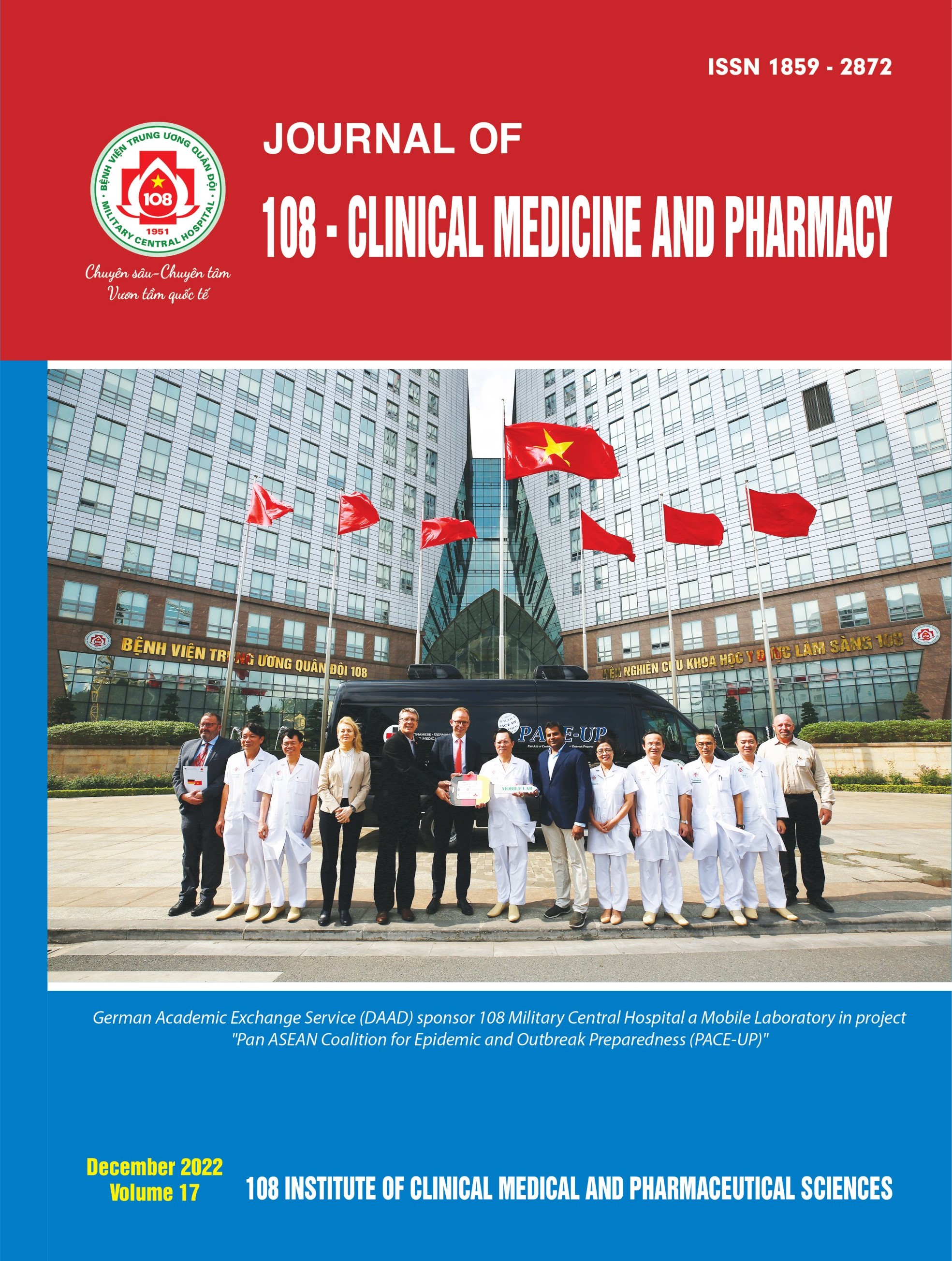Giant benign tumor of the sacrum - A case report
Main Article Content
Tóm tắt
Introduction: A benign sacral tumor is a rare disease, especially with a giant tumor. We will present the clinical examination, imaging diagnosing images, and our experience in this case. Case presentation: We report a 25-year-old female with a massive sacral tumor, which had been developing for ten years. Clinical examination showed a 210 × 150 × 210mm mass originating from S2 into the sacrum with organ displacement. The biopsy confirmed that was a benign tumor. The surgery was performed with the anterior and posterior approach to remove the tumor and preserve sacroiliac joints. After 18 months, her recovery was smooth. However, she still presented irreversible damages to the bladder and rectal sphincter functions. Conclusion: En block resection of the giant benign sacral tumor with the anterior and posterior approaches is only administrated for a massive and complicated mass, which can only be performed in hospitals with advanced operating departments, anesthesiology, and aggressive supportive care.
Article Details
Các tài liệu tham khảo
2. Llauger J, Palmer J, Amores S et al (2000) Primary tumors of the sacrum: Diagnostic imaging. AJR Am J Roentgenol 174(2): 417-24.
3. Ahmed AT, Omar AR, Mohamed M et al (2018) Management of sacrococcygeal chordoma: A systematic review and meta-analysis of observational studies. Spine (Phila Pa 1976) 43(19): 1157-1169.
4. York JE, Kacjarai A, Abi-Said D et al (1999) Sacral chordoma: 40-year experience at a major cancer center. Neurosurgery 44(1): 74-79; discussion 79-80.
5. Denaro L, Berton A, Mauro C et al (2020) Surgical management of chordoma: A systematic review. J Spinal Cord Med 43(6): 797-812.
6. Schwab JH, Healey JH, Jorge G et al (2009) The surgical management of sacral chordomas. Spine (Phila Pa 1976) 34(24): 2700-274.
7. Alyousef Z, Aleissa M, Alaamer O et al (2021) Combined laparoscopic and posterior approach resection of large sacrococcygeal cystic teratoma. Surg Case Rep 7(1): 20.
8. Wessell A, Hersh D, Ho C et al (2018) Surgical treatment of a type IV cystic sacrococcygeal teratoma with intraspinal extension utilizing a posterior-anterior-posterior approach: A case report. Childs Nerv Syst 34(5): 977-982.
9. Angelini A, and P Ruggieri (2013) A new surgical technique (modified Osaka technique) of sacral resection by posterior-only approach: Aescription and preliminary results. Spine (Phila Pa 1976) 38(3): 185-192.
10. Genovese AM, Fedele F, Barbera A et al (2000) Posterior approach in the treatment of sacrococcygeal chordoma: A rare, locally infiltrating, destructive and recurrent tumor. A case report and review of the literature. Minerva Chir 55(6): 455-458.
11. Mett TR, Boyce MK et al (2018) Defect coverage using gluteal flaps. Oper Orthop Traumatol 30(4): 236-244.
12. Koh PK, Tan BK, Hong SW et al (2004) The gluteus maximus muscle flap for reconstruction of sacral chordoma defects. Ann Plast Surg 53(1): 44-49.
13. Furukawa H, Yamamoto Y, Igawa H et al (2000) Gluteus maximus adipomuscular turnover or sliding flap in the surgical treatment of extensive sacral chordomas. Plast Reconstr Surg 105(3): 1013-1016.
14. Borman H and T Maral (2002) The gluteal fasciocutaneous rotation-advancement flap with V-Y closure in the management of sacral pressure sores. Plast Reconstr Surg 109(7): p. 2325-9.
15. Parkash S and Banerjee S (1986) The total gluteus maximus rotation and other gluteus maximus musculocutaneous flaps in the treatment of pressure ulcers. Br J Plast Surg 39(1): 66-71.
 ISSN: 1859 - 2872
ISSN: 1859 - 2872
